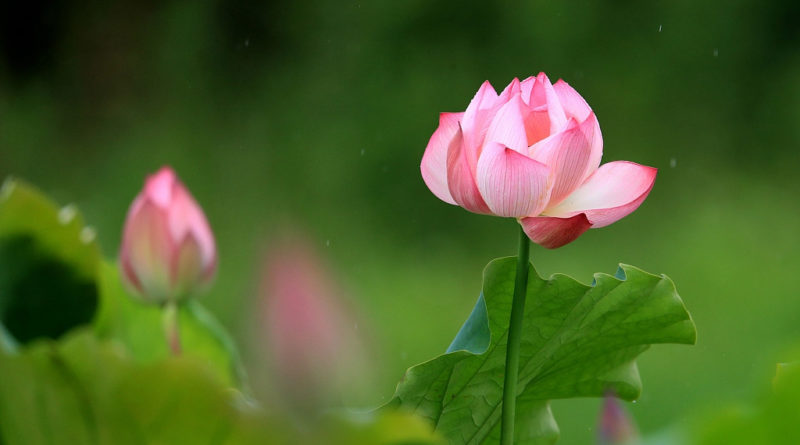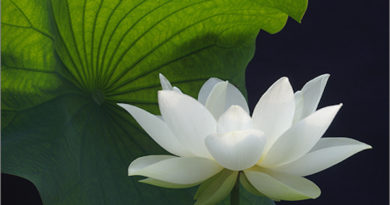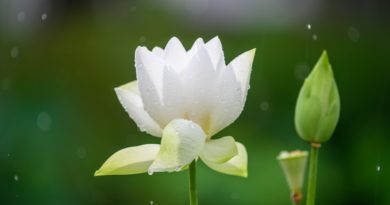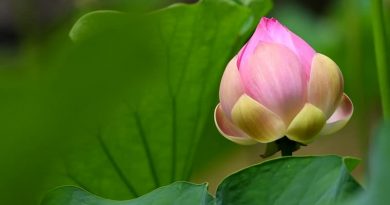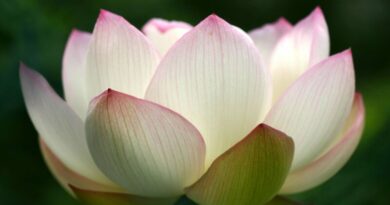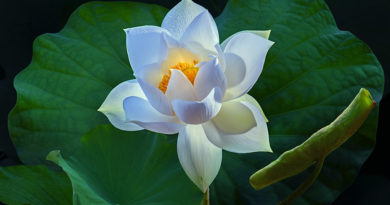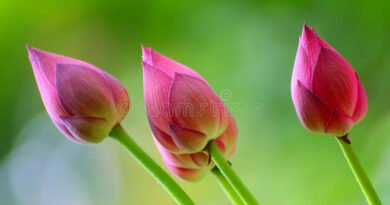DHAMMA RATANA – CHAPTER 15: PROGRESS OF INSIGHT WITH EMPHASIS ON SANKHARUPEKKHA NANA
DHAMMA RATANA – CHAPTER 15: PROGRESS OF INSIGHT WITH EMPHASIS ON SANKHARUPEKKHA NANA
The title of today’s sermon is “Progress of Insight with emphasis on the Sankharupekkha Nana.” Every meditator should strive for the attainment of Sankharupekkha Nana which is the most appropriate stage of insight to conceive the higher wisdom and its benefit lucidly. However it could be attained only after acquiring the lower stages of insight. There are three ways of practice to gain dhamma.
(1) Way of Kamma
(2) Way of Jhana
(3) Way of Wisdom
(1) Way of Kamma
To gain better existence, it is required to develop wholesome volitional kamma by giving dana and observing sila. Because of these meritorious deeds one is destined to be born in the human and deva worlds. It is, therefore, important to develop noble mind so that merits accrue to you. Human and deva worlds can provide one with opportunities to carry out meritorious deeds such as dana and sila. If you do not seize this opportunity with the belief that dana and sila lead to prolongation of round of rebirths, and fail to give dana and to observe sila, the immoral deeds will step in and send you to apaya. If there is no wholesome deeds, then unwholesome deeds develop for the reason that in a man’s life there arc either merits or demerits. Taking into account of these, it is of utmost significance that we should try our best to develop a better way of Kamma.
(2) Way of Jhana
By practising samatha mediation one will gain Jhana power and will be reborn in one of the 20 Brahma Worlds after death. Since it is a place of bliss and joy, they live on joy and there is no need for food. Bodies of Brahma glow with brightness and they enjoy a long life. There is no craving, lust or greed and anxieties in the Brahma worlds nevertheless those kilesa may develop in individual mind. In other words, Brahma as individual could not be regarded as emancipated from kilesa. The benefit of the way of Jhana is superior to that of kamma, however it cannot save one from apaya. Vipassana meditation is the only way of liberation from apaya.
(3) Way of Wisdom
It is the way of vipassana meditation. You all should endeavour to acquire way of wisdom rather than way of Jhana. At present learned teachers no longer encourage or instruct the way of Jhana, because it results in prolonged existence and at the same time has no safe guard for freedom from apaya. Jhana power gained through samatha (tranquility) concentration is not of higher value. Though it may send one to the Brahma worlds, there is no guarantee that he may not be reborn in apaya. Without vipassana meditation it is an infallibility that one will suffer in the lower abode.
“Shining, shining in the Brahma World
Grunting, grunting in the pig sty”
The way of Kamma is reliable only for one or two existences which are not free of old age and sickness. Thereupon the way of Wisdom is the most dependable one for the realization of nibbana and it prohibits suffering in apaya. The only thing is that you are to be sincere and true in striving for nibbana and to develop vipassana wisdom which begins from the Nama-rupa Pariccheda Nana.
There are 13 stages of vipassana wisdom, from the Nama-rupa Pariccheda Nana to the Gotrabhu Nana. Magga Nana, Phala Nana and Paccavakkhana Nana are the three higher stages of insight. The first thirteen stages are the basic foundations for the realization of nibbana. Magga Nana, Phala Nana and Paccavakkhana Nana will be achieved if the vipassana wisdom is fully developed. No one could pray or just wish for these stages of insight, however it is attainable only through ardent practice of insight meditation.
Nama rupa Parriccheda Nana means, nama=conscious mind, rupa=matter, nana=knowledge, Parriccheda=distinguishes between mind and matter. It is the stage of insight where one can distinguish mind and matter. Under the correct instruction one can attain this stage of insight after four or five days of meditation practice. According to the guidance of Rev: Mahasi Sayadaw, beginners practise meditation by noting “rising” and “falling” “sitting” “standing” “moving forward” “stretching” “bending” etc: At first it may not be evident to the practising yogi and he may think “It is “I” who note,” when the abdomen rises, “It is my abdomen rising”, when the abdomen falls ” It is my abdomen falling” “It is ‘I’ who sit;” “It is ‘I’ who stand”, etc: This is due to lack of vipassana wisdom.
With mature concentration, vipassana wisdom develops, and he perceives that “rising” (of the abdomen) is a separate entity from the noting mind, “falling” is a separate entity from the noting mind: “sitting” is a separate entity from the noting mind and so on. “Rising” “falling”, “sitting” “standing” etc: are the unconscious matter or rupa; noting is the conscious mind or nama. A yogi predominated by wisdom can comprehend rupa and nama distinctly. On the other hand, one predominated by faith, perceives rupa and nama separately only when the meditation instructor points it out. “There is nothing in this body besides rupa and nama. There is no “I” or “self’; conventional term “I” is used for the convenience sake of communication,” Thus faith predominated yogi realizes when the instructor explained. Whereupon the erroneous views of “self” and that of aggregates are dispelled. This is the initial step in the way of wisdom to close the door to apaya and to establish a firm foundation for the attainment of nirvana.
With repetitive practice while noting “rising” and ‘falling”, the wisdom predominated yogi readily realizes that the “rising” and “falling” are the objects of noting and at the same time they are the cause of noting; the noting of “rising” and “falling” is the effect. According to the stages of insight he has achieved, a yogi will experience “rising” and “falling” at various parts of the body; it manifests at the side, on the chest, in the arms, at the top of the head, etc: He has to note wherever. “rising” and “falling” manifest. These shiftings are the signs of dhamma, that is “rising” and “falling” is the cause and noting is the effect. He is now at the Paccaya Pariggaha Nana Stage, the knowledge that distinguishes between cause and effect. I am certain that most of the practising yogi have attained this stage of insight.
When the concentration is strengthened yogi reaches the stage of Sammasana Nina, which is the worst stage of insight. He reflects upon the impermanency of phenomena, that means the vanishing of both the object of noting and the noting mind itself anicca. At the same time he realizes that all that arise and immediately pass away are not worthy of cherishing and relying on; they are therefore suffering, dukkha. Another realization is that nothing happens in obedience to his will, but only of its own accord, anatta. Those without samatha meditation in the past existences encounter these process of arising and disappearing distinctly. However this worse stage of insight is passed through in a short time by those who have practised samatha meditation in the past existences. For the latter, there is not much suffering, nevertheless experiences more pleasantness in vipassana meditation.
Not long after sitting yogi encounters with pain, numbness, aches, itching, etc: (Dukkha Vedana) lucidly. Well practised yogi will remember these experiences. In such state yogi would like to change posture frequently. Thereafter progress in meditation is retarded. It is of great importance for the yogi to be patient so as to gain dhamma and to note objectively and successively. Even though yogi experiences dukkha vedana at first, later on he reflects upon his body thus, “Since it is changing, it is impermanent; these pains and aches are unlike before. I come to meditate and gain dhamma and happiness of nibbana, however these sufferings are beyond my control.” Reflecting thus he is in distress because of physical and mental suffering. Thence he perceives his body as a massive suffering. The three characteristics are apparent to him.
The next stage is the Udayabbaya Nana. Udaya=becoming + vaya=dissolution + nana=knowledge. At the beginning of this stage, becoming and dissolution process is not so evident and there is pleasant experiences, because of less pain and aches. He also experiences physical and mental buoyancy, physical and mental pliance and physical and mental workability. Moreover he finds that he is both physically and mentally proficient. Those yogi. in the lower stages of insight, have to change posture after sitting for one or two hours, now at the Udayabbaya Nana Stage they can sit for 2 or 3, 4, 5 hours without changing. For him noting goes on of its own accord and the object of noting also manifests spontaneously thereupon noting comes with ease.
Some yogi reported, “My body is erect like a doll and noting goes on effortlessly. It appears to me, I am just watching it unconcerned. I would not be able to express my feeling of pleasantness and quietude.” A yogi practising in a secluded place gains dhamma when vipassana wisdom is mature. “Thence he enjoys both physical and mental pitisukha (Happiness) which, leave alone a common person not even devas, could have a chance to experience,” remarked the Buddha. At this early stage of Udayabbaya Nana, the process of arising and passing away is very vivid to the yogi, from the initial stage to the end arising is becoming and passing away is dissolution.
With steadfast noting yogi reaches the Bhanga Nana Stage; the knowledge of dissolution. Usually the initial stage of becoming is not clear but the end stage is very lucid. If he does not perceive the end stage, the meditation instructor reminds him to note the end stage of becoming. In walking practice, it is to note attentively the end of ‘lifting” (of the foot), the end of moving forward, etc: The perception of the end is the same as perceiving the dissolution.
When the Bhanga Nana is strengthened, yogi is aware of the fact that not only the object of noting but the noting mind also disappears. Thus he perceives the impermanency or anicca. He then ponders, “All that arise are impermanent”. The recognition of one characteristic may be regarded as the cognizance of the remaining two. The Bhanga Nana is considered as a very strong insight, whereas the first four stages of insight, (Nama-Rupa Pariccheda Nana to Udayabbaya Nina) are immature or weak vipassana wisdom. During these four stages yogi notes only form and has to be attentive to control his mind. The form such as head, leg, arm disappear with the maturation of concentration at the Bhanga Nana Stage. Yogi finds it difficult to note as there is no form as the object of noting. He has no idea of how and what to note and thinks that dhamma is in regress. Yogi has to be encouraged thus, “When you got through this stage of Nana there will be improvement”.
Next is the Bhaya Nana=awareness of dread or fear. The disappearing of all phenomena are so swift that there arises fright. Thus it comes to be realized that all these psycho-physical phenomena, so rapidly dissolving are undesirable dhammas of an inferior and evil nature. This is the Adinava Nana=knowledge of misery. Such rapidly disappearing psycho-physical phenomena are then seen to be insubstantial and devoid of pleasure, unreliable, and tiresome. This is the Nibbida Nana =knowledge consisting in the contemplation of wearisomeness or disgust. This stage is also based upon the Bhanga Nana
With strong Nibbida Nana which sees and knows all psycho-physical phenomena as suffering, a desire arises to renounce the body-mind complex. This is the Muncitu Kamyata Nana=knowledge of desire to renounce. Yogi no further effort by noting so that one may be able to renounce. This is the Patisankha Nana knowledge of re-observation.
The Patisankha Nana is a worse stage of insight and similar to the Sammasana Nana stage in suffering pains, aches, giddiness, etc: . These vedanas are very vivid to those who had not experience as such in the Sammasana Nana stage; however the nature of changing of these vedanas is different. In the stage of the Patisankha Nana, changing of pain, aches, giddiness, etc: is very rapid and yogi often want to change posture. His body, legs, arms, etc: shake or shift often, therefore noting gets worse. Since many days have passed without much improvement in dhamma, yogi is depressed and give so many lame excuses to go home. The instructors can judge which stage of insight this yogi has attained and encourages him thus, “It usually happens at this stage of Nana; mind is unstable and faith in the Buddha and Dhamma relapses; sometimes yogi even finds fault with dhamma. Nevertheless if you overcome this stage, you will be rewarded with the audition of progress of insight.”
Sankharupekkha Nana
Next is the Sankharupekkha Nana Stage which is peaceful and pleasurable. According to one’s perfection one will gain Magga Nana and Phala Nana successively. If yogi’s wisdom is not strong enough to attain magga and phala, meditation instructor should allow him to listen to the progress of insight. He should not let yogi go without it.
Motto: Free from fear or fondness
Equal view of suffering and happiness
Contemplation comes with no difficulty
Sankharu’s three characteristics of equanimity.
There is no more desire and fright related to mundane or supra-mundane world. Yogi at this stage is no longer disturbed by unpleasantness or fear as in the Bhanga Nina Stage; or by strong delight as in the Udayabbaya Nana Stage.
He is capable of withstanding the vicissitude of life. Hence all should strive for the attainment of Sankharupekkha Nana. If you are patient, you will be happy and consequently noting becomes easy and effortless. You also feel that you are just observing the conscious mind.
Motto: Prolonged contemplation without changing
There is no mind wandering
More and more subtle is the dhamma
The three significant characteristics of Sankharupekkha.
The object of noting becomes subtle and there is a good control over the noting mind. Contemplation is likened to the soft touch of cotton. In other words the noting mind settles on the object of noting just like a cotton swab absorbs water as soon as it touches it (water). There is no mind wandering especially when the Sankharupekkha Nana is strong. Since the noting mind is fixed on the sense object, there need no effort. As the sense object and the noting mind are so subtle that yogi is unaware of “rising” and “falling” but only the conscious mind. He also experiences soothing feeling as if sprinkled with a spray of cool water. On noting a sound yogi hears it as a mere sound and note “knowing” “knowing”. Yogi tries to note the frightful experience as in the Bhaya Nana Stage, however it does not manifest. He also lets loose his noting conscious mind but it does not wander off. This is the special characteristics of Sankharupekkha Nana.
Those who contemplate Sankharupekkha Nana can be classified into 3 types.
(1) Puthujjana
(2) Sekkha: those who are striving for the realization of nibbana
(3) Arahants
Among these three types, there are similarity and differences or significance in contemplating Sankharupekkha Nana. All three (puthuzanas, sekkhas and arahants) contemplate this Nana in the same way.
Differences or Significance
(a) Effectiveness:
Puthujjanas and 7 Sekkha. (each of those who has attained Sotapatti magga, Sotapatti phala, Sakadagami magga. Sakadagami phala. Anagami magga. Anagami phala and arahatta magga) gain merits by contemplating Sankharupekkha Nana. Whereas there is no merits or demerits for the arahat as it is the last existence for him. Thus it is the significant feature of Sankharupekkha Nana, i.e. ineffective for arahats.
(b) Distinction
To the puthujjana and sekkha, Sankharupekkha Nana is distinct and sharp at times but not always and yogi, therefore thinks there is laxation in his contemplation of dhamma. When it is not sharp, yogi who believes himself to be a striver for nibbana, is depressed. thinking that he is not such a one. If he has the knowledge of the fact that Sankharupekkha Nana is not always distinct, he would be much relieved. It will be distinct when concentration is strong, in other words, when the controlling powers (Indriya) are balanced. For arahats Sankharupekkha Nana is ever distinct. This is the difference in Sankharupekkha Nana between arahats and puthujjana and sekkha.
(c) Contentment
Both puthujjana and sekkhas practise vipassana meditation, however there is no contentment for them. Puthujjanas contemplate in order to dispel kilesa and to achieve the progress of insight; whereas sotapans strive for higher Magga Nana and Phala Nana. Since they have not completely eliminated kilesa and realized nibbana, they are not yet content. An arahat is content and satisfied as he has utterly eradicated all Kilesas and thus there is no need to strive for higher Magga Nana and Phala Nana.
(d) Elimination
Puthujjana has to endeavour to expel three attachments namely (1) erroneous views of self and that of the aggregates; (2) clinging to mere rites and rituals such as behaving like animal, strong self-tormenting practices and taking refuge in incorrect faith; (3) perplexity or doubt about the past and future existences, also in the Buddha, the Dhamma and the Sangha. Sotapan has already discarded the three attachment, he therefore, has to practise for the attainment of higher Magga Nana and Phala Nana. An arahat who had completely dispelled kilesa, contemplates so as to have bodily happiness (kaya sukha) in the present life which is the last existence for him.
(e) Passing time
Puthujjana contemplates with enjoyment at Sankharupekkha Nana. Sotapan also contemplates and enjoys at Sankharupekkha Nina stage and at the same time he develops ecstatic state of fruition (Phala-samapatti). An arahat contemplates and develops ecstatic state of fruition. His contemplation is well balanced he passes time by noting anatta, anicca and dukkha.
No matter what progress of insight you may have reached, it is necessary to contemplate at Sankharupekkha Nina Stage. You may be at this stage for quite a while, however it is not to be disheartened, because one day you will achieve the remaining two vipassana wisdom. They are Anuloma Nana (adaptive knowledge which rises in connection with the Four Noble Truth) and Gotrabhu Nana (knowledge which destroys the lineage of common worldlings.) After these 13 progress of insight, Ariya Magga Nana, Ariya Phala Nana and Paccavekkhana Nina (retrospective knowledge) follow in succession. Thus there are 16 progress of insight.
After listening to this sermon on “Progress of Insight with Emphasis on Sankharupekkha Nana, may you all be able to practise in accordance with Buddha’s instruction with diligent contemplation. May you all be able to practise in ease and immediately realize your most aspired Nibbana which is free from all sufferings.

